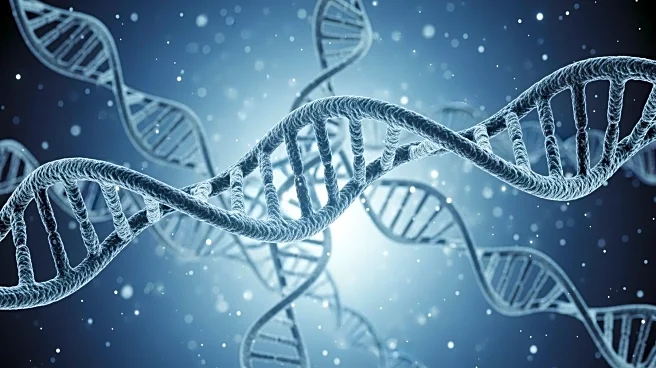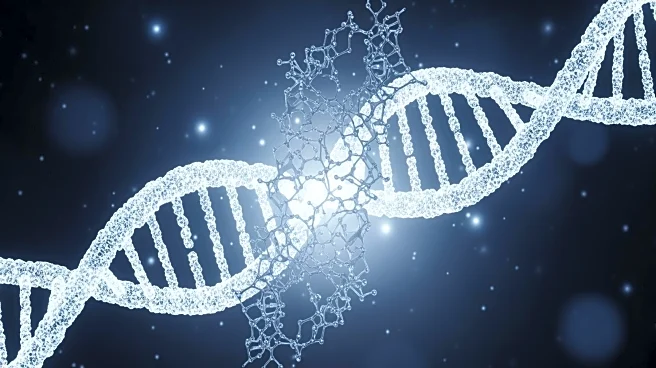What's Happening?
Researchers at MIT have discovered that small 3D loops in the genome, which connect regulatory DNA elements and genes, remain intact during cell division, challenging the long-held belief that the genome's
structure temporarily vanishes during this process. This finding was made using a high-resolution genome mapping method called Hi-C, which identifies interactions between DNA elements. The study, published in Nature Structural and Molecular Biology, reveals that these loops actually strengthen as chromosomes condense in preparation for division, allowing cells to 'remember' genetic interactions. This discovery could bridge the gap between genome structure and gene regulation, a longstanding challenge in the field.
Why It's Important?
This breakthrough has significant implications for understanding gene regulation and the fundamental processes of cell division. By revealing that 3D genome loops persist during mitosis, the study challenges existing models and could lead to new insights into how genes are turned on and off. This knowledge is crucial for fields such as cancer research, where gene regulation plays a key role in disease progression. The findings may also influence future research on genome architecture and its impact on cellular functions, potentially leading to advancements in genetic therapies and personalized medicine.
What's Next?
The research team plans to explore how variations in cell size and shape affect genome structure and gene regulation. They aim to understand how cells decide which microcompartments to maintain or remove after division, ensuring fidelity in gene expression. This could provide further insights into the mechanisms of gene regulation and the potential for manipulating these processes in medical applications.











